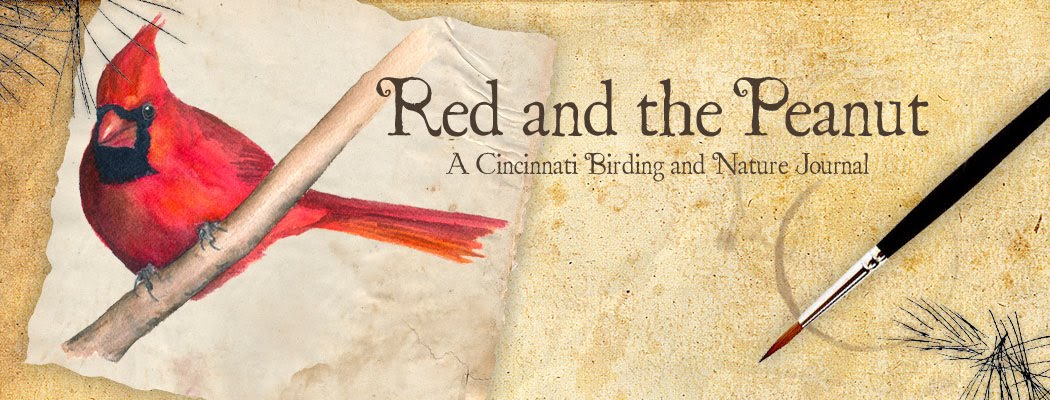Let’s hop back a week to Saturday, Nov 7, when I went to Caesar Creek State Park with the Cincinnati Birding Club and saw 10+ Common Loons. My photos of the loons were horrible. We were so far away that they just looked like little silhouettes, so to get a decent view I had to paint one. The Common Loons we saw that day were not in breeding plumage, they were much duller in their basic plumage of gray and white, but if you’re going to paint a loon, he might as well be wearing his finery…

Common Loon in Breeding Plumage
In Cincinnati, we only get to see loons during migration, and even then, if you’re not in the right place at the right time, it’s hard, so I’ve never heard the incredible mating calls you hear so much about. I want to head up north one of these summers during breeding season so I can experience that. I would love to see a nest as well…
Since I’m not that familiar with the Common Loon, I got out my “Birds of Ohio” book by Jim McCormic to see if he had any interesting tid-bits about the bird. Part of the reason I like McCormic's book is because he throws in interesting facts you don’t find in standard field guides. The Common Loon is a diver, and if you’ve ever watched one, you know he can swim great distances under water. You probably also noticed he sits noticeably low in the water. Mr. M explains why,
“These divers are well adapted to their aquatic lifestyle: most birds have hollow bones, but loons have nearly solid bones that make them less buoyant. As a result, loons float low on the water, resembling partially submerged submarines.”I would assume the extra weight helps them stay under the water as they dive for food, and probably has something to do with the fact they have to run across the water for so long (like an airplane on a runway) before they can become airborne. I remember reading somewhere that loons never glide when they are flying...I guess they have to flap those wings non-stop to keep their considerable heft aloft! Their wings are also fairly small for their bodies--all to help them dive and swim under water.

Flap oh hefty one, flap!
Another one of my favorite Ohio bird books is “The Birds of Ohio,” by Bruce G. Peterjohn. This is a must-have book. He lists records of sightings going all the way back to the 1800s, but what’s really helpful is the array of breeding bird atlas maps. If you have a question about a breeding bird in Ohio, it’s a great place to start. I always read this book to find out non-field guide information. It’s huge, too…coming in at 637 pages.

...like this photo is any better!
(Do you see why I had to paint this dude?)
If I want to get out and see some more of these birds, I had better hurry. According to Peterjohn,
“Common Loons are most numerous in autumn. The largest movements occur during November, when these loons become common to abundant along Lake Erie and fairly common to locally abundant on large inland lakes. During most years, numbers of Common Loons are greatly reduced by the first week of December. Most December sightings are of 1-8 loons, with occasional flocks of 15-40. The last flocks disappear by mid-December, although scattered individuals will remain into the first half of January as long as open water remains available.”
P.S. I just read on the Birding in Cincinnati website that 225+ Loons were on the river at Crooked Run Nature Preserve to the Meldahl Dam. I need to find out where this place is!









